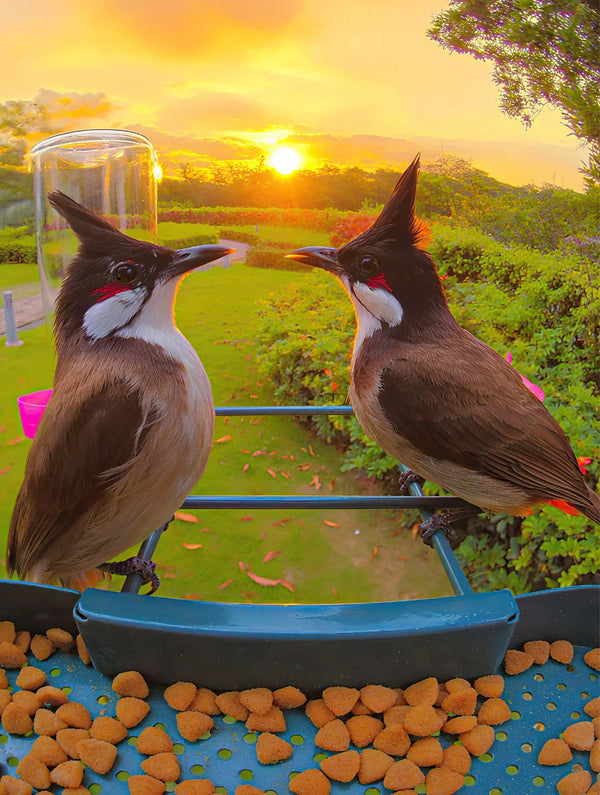Transform Your Backyard into a Birdwatcher's Paradise with These Must-Have Feeds!
In recent years, birdwatching has blossomed into a beloved hobby for many backyard enthusiasts, offering a unique way to connect with nature right outside the door. The simple act of providing outdoor bird feed can transform any garden into a vibrant haven for various bird species. With a little effort and the right selections of feed, you can attract colorful songbirds, majestic finches, and even the occasional hummingbird, creating an atmosphere brimming with life and activity. Observing these feathered friends as they flit about your backyard not only brings joy but also promotes relaxation and mindfulness. The right bird feed is essential in encouraging these beautiful creatures to visit, and understanding their dietary needs will help establish a thriving ecosystem in your garden.

Understanding the Needs of Backyard Birds
To successfully attract birds to your backyard, it’s crucial to understand their dietary preferences, which vary significantly among species and seasons. For instance, seed-eating birds like sparrows and finches thrive on sunflower seeds and millet, while insectivores such as warblers and wrens prefer protein-rich insects. During the colder months, many birds require high-energy foods, as they expend more energy maintaining their body heat. This is why understanding the seasonal dietary shifts can influence your birdwatching experience dramatically. In spring and summer, you might notice an influx of birds seeking protein to feed their chicks, while in the fall and winter, they will gravitate towards high-fat content foods to sustain them through harsher conditions. Knowing what birds are native to your area—and when they are most active—can help you tailor your feeding strategies effectively.
Types of Outdoor Bird Feed
When it comes to outdoor bird feed, there are several types available, each catering to different avian species. Seed mixes are a classic choice, often containing a blend of sunflower seeds, peanuts, and millet, appealing to a wide variety of birds. However, not all seed mixes are created equal; some may include fillers that birds tend to avoid. Suet and fat balls are excellent options for providing energy-rich food, particularly during the winter months when birds need extra calories. For hummingbirds and other nectar-loving species, sugar-water solutions can attract these beautiful creatures in the warmer months. Pellets can also be a good choice, providing balanced nutrition but may be less appealing to some birds. By understanding the pros and cons of each type, you can create a feeding strategy that attracts the birds you wish to observe.
Seed Mixes
Popular seed mixes often contain a variety of ingredients, including sunflower seeds, safflower seeds, and peanuts. These ingredients not only attract a wide range of birds but also allow for an easier feeding experience. For instance, if you live in an area where house finches are common, a seed mix rich in sunflower seeds will likely draw them in. Take the time to research what birds are local to your area and choose seed mixes that will cater specifically to those species. Additionally, creating your own mix by combining seeds that you’ve seen birds gravitate toward can be a fun and rewarding approach.
Suet and Fat Balls
Suet and fat balls are a fantastic way to provide high-energy food that birds need, especially during colder months. Made from animal fats mixed with seeds, fruits, or insects, these options are packed with calories. My friend, who is an avid birdwatcher, swears by suet feeders during winter; she often sees woodpeckers and nuthatches frequenting her backyard as they snack on the fat balls. Placing these feeders in a sheltered area can help protect them from the elements, ensuring your feathered friends can access this essential energy source.
How to Set Up a Bird Feeding Station
Creating an inviting bird feeding station in your backyard is easier than you might think. Start by selecting a suitable location that offers a clear view for birds and shelter from predators—near trees or shrubs can be ideal. Choose feeders that cater to the types of feed you plan to offer, such as tube feeders for seeds or platform feeders for suet. It's also important to maintain cleanliness by regularly cleaning the feeders to prevent the spread of disease among birds. My neighbor set up her feeding station with a mix of feeders and a small birdbath, creating a welcoming environment that has become a popular hangout for local birds. The more inviting your setup, the more likely it is that birds will return to visit.
Seasonal Feeding Strategies
Bird feeding needs change throughout the seasons, and adapting your practices accordingly can lead to a more fruitful birdwatching experience. In spring, as birds return from migration and begin nesting, consider offering high-protein foods like mealworms or high-fat seeds to help them replenish their energy. During the hot summer months, providing a water source alongside feed is crucial, as birds often struggle to find hydration. In the fall, it's important to maintain consistent feeding to support migratory birds. My friend, who lives near a migration path, notices a significant increase in bird activity during the autumn months when she keeps her feeders stocked. Being mindful of seasonal changes not only helps you attract a diverse range of species but also supports them during critical life stages.
Creating a Bird-Friendly Environment
Transforming your backyard into a birdwatcher's paradise is a rewarding endeavor that requires understanding the needs of various bird species and providing the right outdoor bird feed. By selecting appropriate feed types, setting up a welcoming feeding station, and adapting your strategies seasonally, you can create a vibrant habitat that attracts a diverse assortment of birds. Whether you want to enjoy the peaceful presence of birds fluttering about or engage in the delightful activity of birdwatching with family and friends, taking action now will lead to countless joyful moments in your own garden. Start your birdwatching journey today and relish the beauty of nature in your backyard!







تعليقات